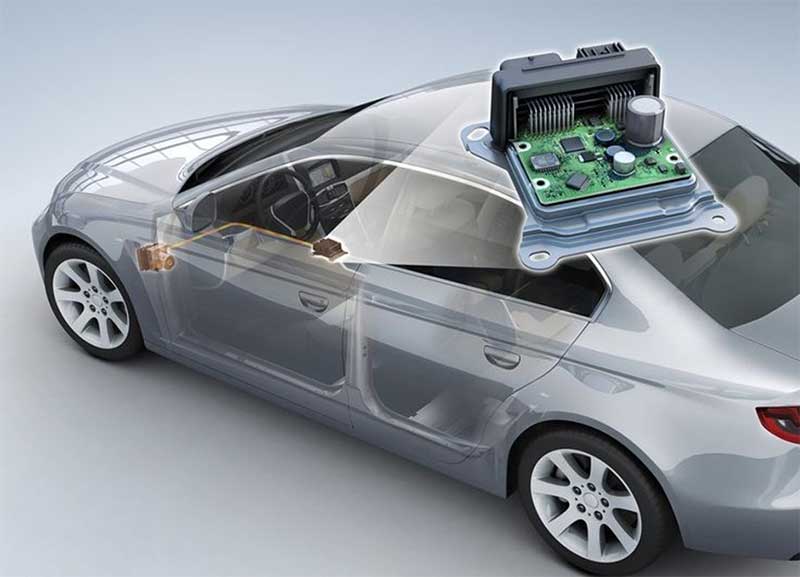Introduction
The headlight control module plays a crucial role in modern vehicles by managing and controlling the various functions of the headlight system. As vehicle electronics have become more sophisticated over the years, the headlight control module has taken on an increasingly central function to ensure the safe and proper operation of headlights, fog lights, and other exterior lighting elements. In this article, we will explore the key functions and components of the headlight control module and how it keeps your vehicle’s lights operating as intended.
What is a Headlight Control Module?
The Headlight Control Module also sometimes called the headlight switch module, is an electronic control unit found in the interior of all modern vehicles. Its main function is to manage the state and operation of the vehicle’s various exterior lights based on inputs it receives. Some of the key tasks performed by the headlight control module include:
– Detecting the position of the headlight switch selected by the driver (off, parking lights, low beams, high beams, etc.)
– Automatically turning on Daytime Running Lights (DRLs) when the vehicle is started based on regional regulations
– Activating/deactivating fog lights, turn signals, hazard lights, and various interior lights as needed
– Dimming/brightening headlights based on inputs from sensors regarding ambient light levels, rainfall, etc.
– Triggering auto-leveling adjustments to headlight beams based on vehicle load
– Indicating any lamp failures to the driver via warning lights on the instrument cluster
So in summary, the headlight control module processes multiple input signals and commands all exterior and some interior lights according to pre-programmed logic. This helps provide key safety and convenience functions through automated control of the lighting system.
How Does it Work?
The headlight control module contains a small microcontroller and related electronic components housed within its plastic enclosure. To operate the various lights, it receives input from several sensors and switches and then outputs power and ground signals as needed. Some of the main components and signals include:
– Headlight switch position sensor – Tells the module the chosen light setting.
– Ambient light sensor – Provides information on light levels for automatic features.
– Rain sensor – Indicates presence of rainfall for auto headlight/wiper activation.
– Load sensor – Detects vehicle load/settings for auto leveling headlights.
– Turn signal/hazard switches – Trigger turn/emergency light sequencing.
– Relay drivers – Connect the module to exterior and interior light bulbs/LEDs.
Based on its programmed logic, the control module then provides switched power/ground outputs to relay drivers as needed. These relays either allow current to flow to the various lights or block it to turn them on/off. Built-in diagnostics also help detect issues for feedback via warning lights.
Importance of the Headlight Control Module
As the central brain coordinating all lighting functions, the headlight control module plays a very important safety and convenience role:
– Ensures headlights and fog lights activate properly based on surrounding conditions like time of day.
– Provides consistent and predictable lighting behavior through automated control.
– Helps prevent distracted/forgetful manual operation of lights by drivers.
– Alerts of any light failures via dashboard warnings, allowing quick repairs.
– Integrates additional safety features like auto leveling and sensor-based lighting.
– future-proofs vehicles for new technologies like adaptive headlight systems.
– Standardizes lighting behavior across all vehicles for consistency.
So in essence, the Headlight Control Module helps optimize visibility, following of regulations, and alertness through centralized automated management of the lighting arrangement. This contributes significantly to overall vehicle and road safety.
Potential Issues and Repairs
Like all vehicle electronics, the headlight control module can potentially develop faults over time due to environmental stresses or component degradation:
– Water/moisture intrusion into the module leading to short circuits.
– Heat cycling damaging solder joints and cracking the circuit board.
– normal component wear like failed solder joints, cracked traces, etc.
– Electrical/software defects from manufacturing or programming errors.
Some common symptoms of headlight control module problems include:
– Lights not turning on as intended based on settings/conditions.
– Automatic features like DRLs/auto lamp not working reliably.
– Warning lights indicating lighting issues on the instrument panel.
– Intermittent or unusual lighting behavior that changes over time.
If issues are suspected, diagnostic testing can locate faulty areas. Successful repair usually involves full module replacement since internal component level repairs are challenging. Proper sealing helps modules last their lifetime in most vehicles.
*Note:
1. Source: Coherent Market Insights, Public sources, Desk research
2. We have leveraged AI tools to mine information and compile it.




